32 Pro Steps To Start Gardening – Gardening Tips For Beginners
by Lee Safin
Are you just starting with gardening?
If you are a noob, then there is so much to know because gardening can be both relaxing and daunting.
You might already have thousands of queries in your mind like what to plant, where to plant your crops, which type of soil to select, how to prune, the time interval for illuminating your plants, and whatnot.
But don't be afraid because once you start, you will learn more as nature is the best teacher in this case and with experience, you will get all your answers.
The main topic of this article is "Gardening tips for beginners - What experts Say."
If you are still facing difficulties, you can learn a lot more by going through some basic and interesting gardening tips and hacks we will be sharing.
So, get your gardening tools and hop on with growing your desired veggies and fruits or flowers in your rooftop or yard, and most importantly, don't forget to enjoy!
Contents
- 32 Pro Steps To Start Gardening
- Step 1. Choose The Correct Spot
- Step 2 . Paint The Picture of Your Perfect Garden
- Step 3. Select Your Soil Carefully
- Step 4 . Select The Most Essential Gardenings Tools
- Step 5 . Always Prioritize Sunlight
- Step 6. You Can Also Consider Artificial Light
- Step 7. Pick Your Most Desired Plants
- Step 8 . Consider Native Options
- Step 9 . Planning - Labelling
- Step 10 . Organize Like a Pro
- Step 11. Keep Your Plants Near a Water Source
- Step 12 . Choose Your Garden Bed
- Step 13. Plant Your Crops Meticulously
- Step 14 . Put The Diseases And Pests At Bay
- Step 15. Organic Fertilizer Is a Must
- Step 16 . Consider Mulch As Your Bestfriend
- Step 17 . Protect Your Plants From Frosting
- Step 18. Significance of Eggshells
- Step 19 . Think About Using Containers
- Step 20 . Fabric Raised Garden Bed or Grow Bag
- Step 21 . Make Your Water Reservior
- Step 22 . Choose a Site Close To Water
- Step 23 . Think About Companions For Your Plants
- Step 24. Prune Your Plants Regularity
- Step 25 . Deadheading
- Step 26. Control Unnecessary Weed Growth
- Step 27. Don't Clean All The Leaves From Your Garden
- Step 28 . Basic Vegetable Growing Hacks
- Step 29 . Recycle The Fallen Leaves Into Compost
- Step 30 . Build a Trellis
- Step 31. Make Your Water Sprinkler
- Step 32 . Maintain Your Hardwork
- Final Verdict on Gardening Tips For Beginners

32 Pro Steps To Start Gardening - Gardening Tips for Beginners
Gardening is not a playground for noobs. Only professionals can get the milestone. But that does not mean a noob can not be a professional. To pull a noob to the landmark of the professionals, we made 32 gardening tips for beginners by following which you can become one of the pro gardeners.
Step 1. Choose The Correct Spot
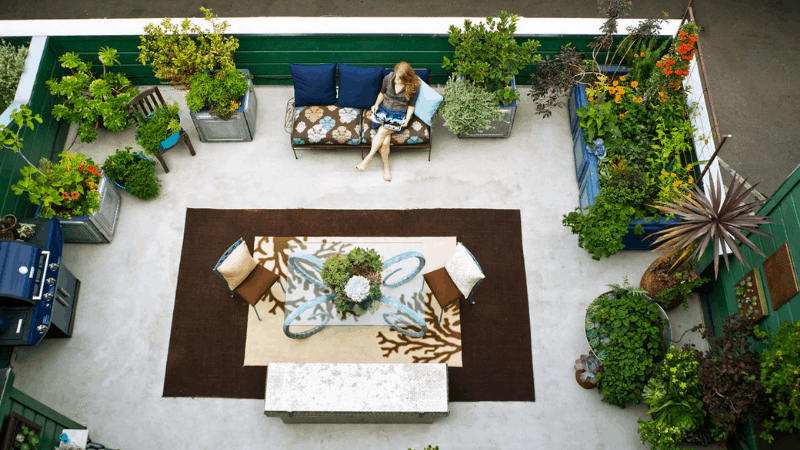
Don't start with a big spot; select a small space, and then gradually increase your room for plants. Make sure that the place you choose gets enough sunlight for at least half of the daytime.
Try to avoid windy areas that might cause your baby plants to be torn apart while growing, and it will also disrupt the pollination.
Finally, consider the accessibility option because there is a saying-
" Out of sight equals out of mind".
Hence, think about the watering, caring, picking, staking, pruning options, and carrying the plants before deciding on your location. When you finally find your spot, you can proceed further.
Step 2 . Paint The Picture of Your Perfect Garden

Before jumping to the essentials of the gardening tips for beginners, think about what you want to plant.
Are you thinking about decorating your yard with beautiful blooming flowers?
Do you want to grow spices instead to get fresh herbs and elevate your culinary skills, or are you thinking of growing garden-fresh healthy scrumptious vegetables to boost your immunity?
Whatever you want, paint a picture in your head, decide on your type, and then work accordingly.
Step 3. Select Your Soil Carefully
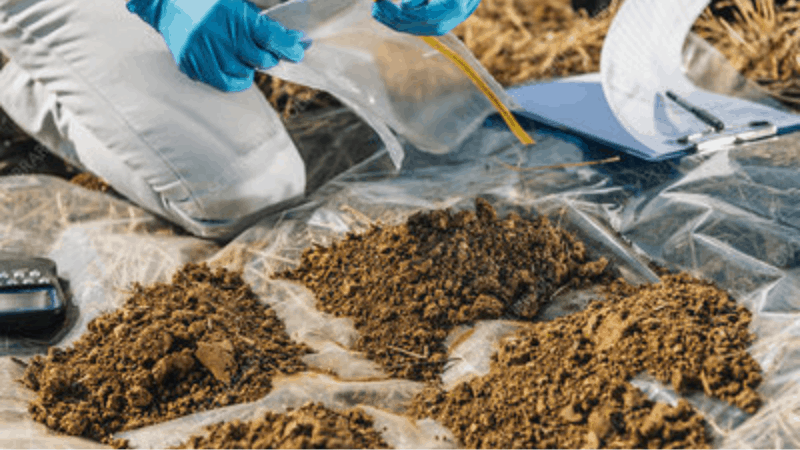
You need to test the texture and quality of your soil before planting the seeds. Plants always prefer the soil packed with nutrients and minerals.
Make sure that you can easily shovel the soil, and it can be ground easily with friction. The hard and clay-like features of the soil will be hard for the root growth of your plants.
In the case of rock-like soil, it should be plowed, and rocks should be removed.
You might wonder that quality improvement of your soil is kind of difficult work, but I assure you that it is not.
You can add some types of organic composts, which I will discuss in the latter points, along with some veggie peels, and you can get the desired soil for your plant.
Remember that your soil only requires composted and rotten manure.
This is because the fresh manure contains high levels of Nitrogen, which can, in turn, burn your crops and has the possibility of containing contaminants like parasites or pathogens.
Pigs, dogs, and cats' manure contain harmful parasites harmful to us and shouldn't be used.
Step 4 . Select The Most Essential Gardenings Tools
Having all tools is the primary gardening tip for beginners.
When you have selected your place, planned your garden design, and chosen the soil, it is time for selecting some basic gardening equipment. You will need the following equipment.
Pruning Scissors

This is the most important equipment that you must have for gardening. These are required to cut off plants and bushes to remove the dead parts and promote their growth.
We recommend the " Fiskars Steel Pruning Shears" as it's the best.
Digging Tools
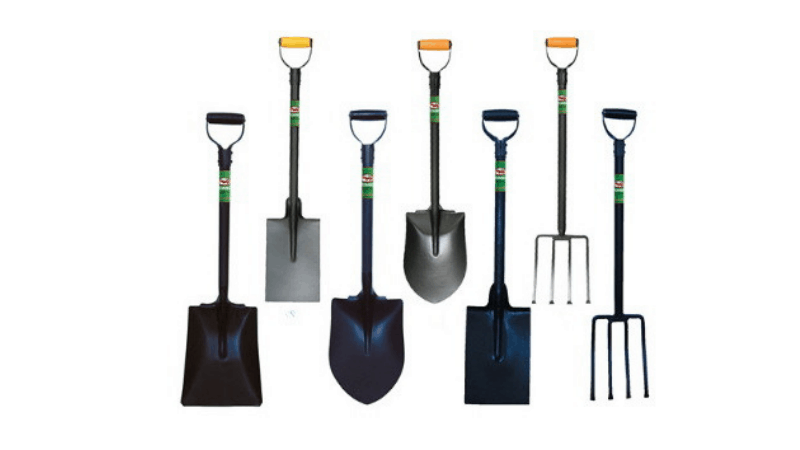
For digging, you will require a spade, garden fork, trowel. The garden fork Is necessary to break down big clusters of soil to clear roots of weeds and plants. The spade and trowel are required to dig holes.
Watering Essentials

The must-haves for watering are cans and hose pipes. Hose pipes are used for greater errands like watering trees in a huge area. Cans and sprays are used for small and delicate flowering plants or baby plants. This is because the small and young plants are not resistant to the high pressure exerted by hose pipes. They would rather prefer the gentle sprinkles by cans.
If you are planning to purchase then we recommend two items, " Bionic Steel hose pipe" and " Almadirect Garden Hose Spray Nozzle."
Weeding Tools

A knife and a forked trowel are needed to remove unrequired plants and weeds and help avoid the creepers from growing in your plants.
If you are planning to purchase we recommend a particular combo set - " Burpee Complete Garden Tool Set."
Step 5 . Always Prioritize Sunlight
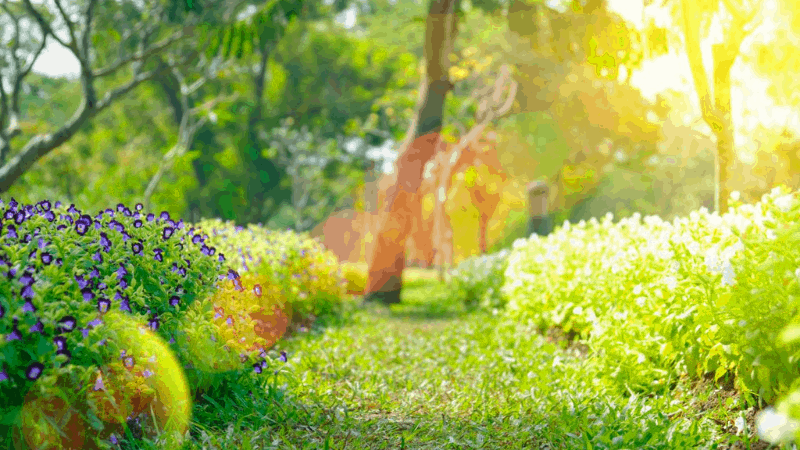
One of the most essential gardening tips for beginners is to ensure the sun light.
Sunlight is an essential means for the survival of plants. It is very normal not to understand this if you are a beginner.
You should know that most vegetable plants, fruits, and herbs plants must be illuminated for at least half a day (6 hours) for optimal survival.
For this reason, you need to find those places in your yard or rooftop where there is proper sunlight for at least half of your day.
Sunlight is like brain juice for plants without which you will not attain the crops you desire, so you must learn to judge the correct spot with proper light.
Step 6. You Can Also Consider Artificial Light
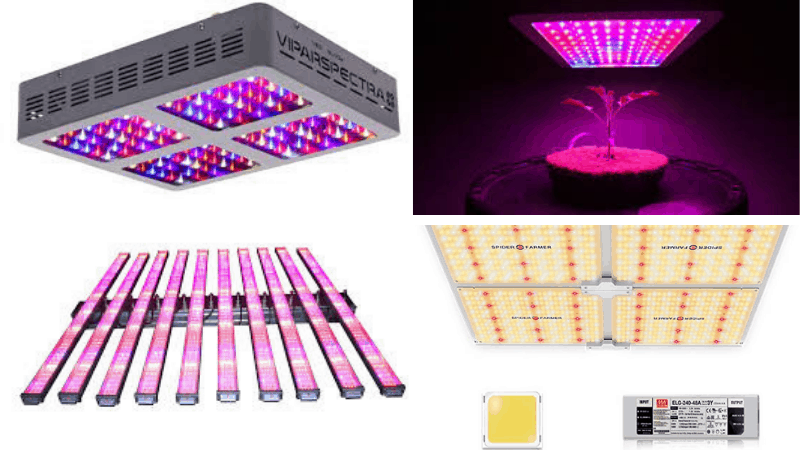
If you are an indoor person and want to grow plants inside your house, there is nothing to worry about.
You just have to feed your plants with abundant water and use artificial grow lights like- LED, Fluorescent, Halogen, Incandescent lights, etc.
We have already prepared an article for you - Best LED Lights For Your Grow Tent
These lights provide a spectrum similar to sunlight for growth and germination. You just need to find the proper substitute and cultivate.
Remember to select the grow light according to the space and number of plants. Since you are just starting, it might be a little tough for you, but I can ensure you that you will be able to fit these very effortlessly with time.
But one downfall to this is that these lights are quite expensive, whereas if you just place your plants under the sun, you can easily grow them and use the expense for better gardening tools or decorating your garden.
So, before going to indoor gardening, consider all your options and work accordingly. Moreover, most people ignore it in their "gardening tips for beginners" guide.
Step 7. Pick Your Most Desired Plants

The most exciting part about gardening is picking your most desired plants, or in this case, mostly seeds.
Starting from scratch gives a very different kind of satisfaction that can't be achieved if you just get your greens halfway.
Before concluding, you should study your plants first, like basic requirements- whether these prefer shade or sunlight, more water or less, manured soil or not, etc.
Usually, this information is mentioned in a label in the seed package.
You need to know what you are doing since you are finally becoming a plant parent!
Step 8 . Consider Native Options
Native plants will make your life easier as these plants can adapt to the normal environment compared to other foreign plants.
Choosing native plants also helps the local pollinators to pollinate, and thus, gardening will become effortless for you.
You should avoid double flowers as pollination becomes hard for insects to reach the pollen or the nectar.
Step 9 . Planning - Labelling - Organizing
The core gardening tips for beginners are - Planning, labelling and organizing.
It is imperative to plan things out, label, and organizes your plants before jumping directly to gardening.
Planning
Make a map in your mind and decide where each plant will reside. Keeping plants too close to each other might hinder their growth.
However, keeping plants isolated is not good as well. I have mentioned companion gardening, which you might find interesting if you read a little further.
Labelling
Take a few moments to make small labels for your plants not to forget your plants and easily identify them.
You can also get creative and come up with a nice idea to label your plants. You can use rocks and engrave the names in the rocks and place them alongside your plants, and you can also write the names in your pots.
There are many DIY labelling ideas that are easily available if you search.
Step 10 . Organize Like a Pro

If you want to learn fast like a pro, organize like a pro!
Make a scrapbook and keep a progress track of your garden.
This progress can be charted out through drawings, pictures, labels, notes, inventing hacks and comparing with traditional methods, etc.
This will help you greatly to understand your progress and learn to grow your plants better.
Step 11. Keep Your Plants Near a Water Source

Always remember that light and water are the ultimate means for your plants to survive.
For that, keep your plants near a water source, be it natural like ponds or artificial like water tanks.
In this way, you will be reminded of watering your plants now and then.
The best way to know if your plants are thirsty or not is by dipping your fingers up to one inch under the soil.
If it is still dry, then you will understand that it's time you water your plants.
Step 12 . Choose Your Garden Bed
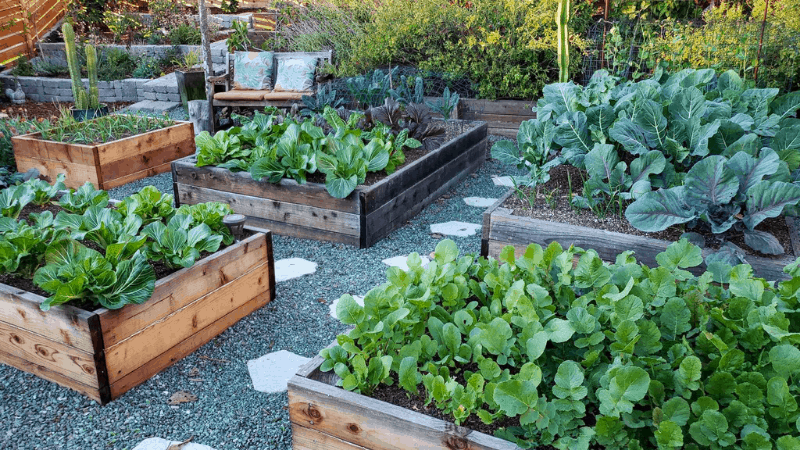
Finally, it's time to do some gardening!
But are you confused about garden beds?
Choosing the type of gardening bed might be tricky, but you might consider raised beds, which can make your life easier as your chance of bending might be reduced.
The beds should be kept at a distance of 3 to 4 feet across each other, and you should be able to reach the centre.
Length should be about 8 to 10 feet so that you have the chance of roaming around your plants as you please without overstepping.
We have prepared an article on it - How to Make a Garden Bed With Bricks?
Step 13. Plant Your Crops Meticulously
After you are done with all of the above tasks, it's time for you to plant your crops. For that, you need to know some basic thumb rules for planting your desired crops in your decorated garden.
- You should dig the seeds of your plants 4 times the seeds' diameter as per instructions written in the seed packaging. Use soil to cover the seeds and keep watering the plants continuously. Make sure that you don't overexpose the seeds before they start growing.
- Before carrying your plants in a container, place the soil in it and make a hole where you put fertilizers and manures, and composts to elevate growth. Finally, put the cluster of roots and cover those in the soil entirely. When you are done with the transplantation, water your baby plants very gently.
Step 14 . Put The Diseases And Pests At Bay
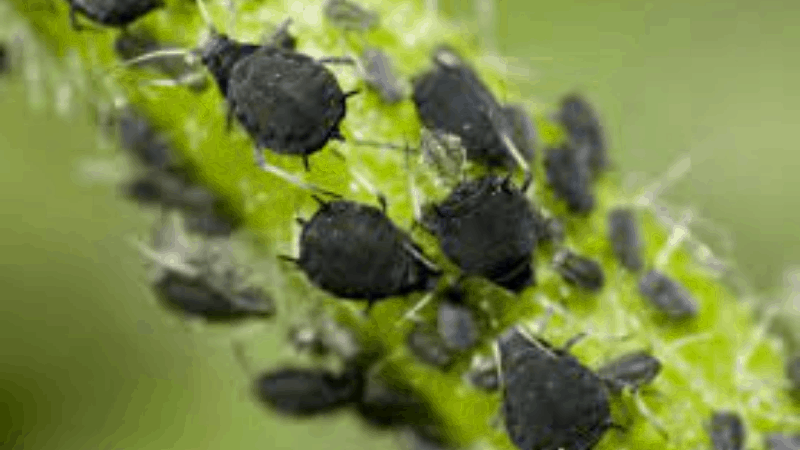
One of the most concerning gardening tips for beginners is controlling the bugs.
If you have well-nourished and healthy plants, then the chances of pest attraction become very less. Pests and parasites are more likely to attack disease struck or unhealthy stressed plants which don't receive proper water or nutrients or have poor quality soil with no organic manures or fertilizers.
Even if your plants get attacked with any sort of pesticide, then don't worry too much. First, think about curing your plant with some organic solutions and take it away from other plants that aren't disease affected.
To help you we have made an article - Best natural pesticides of Indoor Plants.
If you want to prevent it from a bug attack, you can make your organic solution using neem leaves or neem oil. First, boil your neem leaves and extract the remaining leaves from the neem water.
After that, add a few drops of soap and shake it very well. After that, sprinkle it on your plants and keep the rest in a spray bottle.
Remember that this might get rotten, so don't use it for more than 2 days, or else it might attract more bugs if it becomes rotten.
However, we have a whole category on pest control. If you are interested to know more, check it out.
How to Control Bugs in The Garden?
Step 15. Organic Fertilizer Is a Must
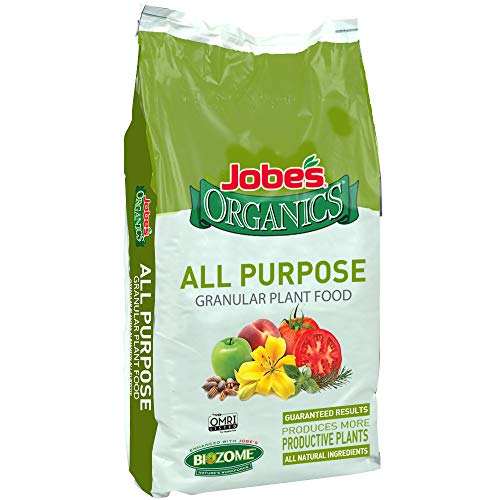

Organic fertilizer is essential for your plants. By applying the proper amount, your plants will get a growth boost, enabling you to get your desired fruits or herbs or flowers more quickly than you can ever imagine.
We recommend " Jobe's Organics 09524 Purpose Granular Fertilizer" as it's the best to start with.
You can make your own fertilizer, which ensures a sense of your own credibility, and you can also be satisfied with it. First, start with making compost that facilitates the growth of your plants.
Compost can be made of anything, like- crushed coffee beans, tea bags, fruit peels, etc.
There are many benefits of organic fertilizers like:
- Moisture retention
- Good bacteria growth stimulation
- Help against pests and diseases attack
- Carbon footprint reduction
Step 16 . Consider Mulch As Your Bestfriend


You can always think about mulching is your best companion to protect your plants from erosion.
When your plants start growing, apply mulch on the soil's surface as a layer to cover the soil.
This mulch can help retain moisture and flood your soil with nutrients, prevent the growth of unwanted weeds, and make the garden bed more lucrative.
When this mulch decomposes, the fertility of your soil is more improved.
Furthermore, we don't know why but most of the gardening blogs are ignoring this mulching step from their "gardening tips for beginners" guide.
Step 17 . Protect Your Plants From Frosting
One of the most challenging steps in the guide "gardening tips for beginners" is protecting your plant from frosting.
This matter is a huge deal for gardeners planting trees in the frosty area.
However, this might be a concern for you during the wintertime. Frosting can cause injury to your plants resulting it to become rough and brittle.
Due to this frost, fluid level reduces, and the leaves appear dark brown or black and easily broken. This can cause huge damage to your plants.
But every problem has a solution, so don't be too worried about it! Water your soil continuously so that it holds the water, and this wet soil warms the air surrounding your plants.
You can also use cloths or plastic sheets to cover your plants at night and remove it the next day. As mentioned before, mulching can also reduce the chances of frosting.


You can also place a 100-watt lamp to emits heat radiation and protect your plants from the extra cold. But remember not to overdo anything.


Step 18. Significance of Eggshells
It's one of the nasty steps of the guide "gardening tips for beginners" which is dealing with eggshells.
Before throwing your eggshells into the bin, just stop right there! Eggshells are useful for your plants.
These eggshells contain a high amount of calcium, which can provide nourishment to your plants.


You can crush them and spread them on the base of your plants or the soil. It should also be noted that eggshells are essential in the protection of your plants from pests.
Step 19 . Think About Using Containers
If you have a small space, you can always consider container gardening.
In a container, all types of vegetables, herbs, shrubs, flowers can grow. But the best option for containers is dwarf plants like thyme, basils, marigolds, mints, etc.
You have to pick the plants based on the climate and check on the amount of sunlight or shade the containers get and then work accordingly.
We commend the following container as the best one as it has a perfect drainage system.


The best part about containers or pots is that you can just keep it anywhere you want with enough light, and that's it!
You can place it on your rooftop or balcony or even use hanging containers and place them in your windows.
The essential part of having these containers is to have a proper drainage hole so that the soil doesn't become waterlogged because that might cause your plants to die.
You can just take the pot every three to four days and drain the water to avoid this. The pothole doesn't have to be huge but big enough for the water to be drained out.
Even after bedding your plants, don't forget to sprinkle water, or else the soil might dry out and cause further problems. Always prioritize the soil quality before you switch to container gardening.
Step 20 . Fabric Raised Garden Bed or Grow Bag


In this case, you start from scratch to make a concrete container for your plants.
Here, plastic containers are considered to be used as dice. This is a very creative project where you can make your fabric raised pot and place your plants using the used materials from your house.
It is very cost-effective, and reusing the plastics for a good cause will help you be a friend to your environment.
The rough edges of your container will exert an archaeological vibe to your pots, which will depict an ancient decorative sense in your garden.
Step 21 . Make Your Water Reservior


You can make your water reservoir by using a plastic slow drip bottle, and it is effortless to make.
Take a plastic bottle, use scissors to cut from below to ensure that it is of the same height as your pot where you're growing your plant.
It should be pushed into the soil before a new sprout generates. Finally, fill the pot with water. This will enable direct passage of water into the roots and promotes the growth of your plants.
Step 22 . Choose a Site Close To Water


If you find building a water reservoir too hard, don't worry too much. You will get there with experience. Meanwhile, plant your garden near such a source where there is an abundant water supply.
You can just use a hosepipe and keep it there all the time and water when your plant becomes dry.
Always remember that, if sunlight is the brain juice for your plants, water is the soul food that keeps your plants fresh and rejuvenated.
Step 23 . Think About Companions For Your Plants
Companion gardening is very desired because plants also like to hang around with other plants like us. But keep in mind that the same species like to stay close to each other and promote growth.
Whereas distant species can hinder growth. Keeping the same species together can actually make your work easier because it requires similar kinds of efforts.
For example, you can grow tomatoes with onions, carrots, basils, marigold, spinach, etc.
These plants are allies to each other. But never plant tomatoes alongside corns. Cabbages, beets, potatoes, and fennel.
Step 24. Prune Your Plants Regularity


It must difficult to digest that trimming the plants which you have put your heart and soul to grow is a good thing.
But you must know that regular pruning doesn't only keep your plants healthy, it also encourages the growth of your plants.
The timing and climate are important factors for pruning. For example, fruiting and flowering plants are preferred to be cut during early spring or, in some cases, late winter.
But on the other hand, trees that begin to bloom in the spring season starts to grow new buds when the old flowers are dead and fall.
Hence, it is vital to prune those parts right away and facilitate easy growth. Several other plants require to be pruned often to stay healthy and fresh.
Step 25 . Deadheading


Deadheading is the process of removing dead leaves or flowers from the plants. It is a good method for perennial or annual flowering plants.
The basic incentive of these plants is to germinate, bloom flowers, and then die.
If you just remove the unwanted dead flower, it will be encouraged to grow more flowers.
Moreover, this will help the plants spend their energy and grow leaves and roots, which are stronger. But avoid deadheading for certain plants like the money plant, also known as Lunaria.
Step 26. Control Unnecessary Weed Growth
You can always keep the weeds controlled and regulated by digging the weed out and
. Don't go overboard on the process by deep digging, which might bring the weeds' seeds and cause them to germinate.You need to weed the unnecessary creepers out often before these undergo seeds. You can also use mulch on the surface to avoid weed growth and promote nutrition.
Weeds can damage your original plants by sucking out the nutrition from them, resulting in reduced quality crops, and for this, weeds should be controlled and avoided.
But in some cases, you can keep the pretty looking creepers, which might add a decorative sense to your garden.
You can also check our latest article to control the weeds " How to Get Rid of Weeds Forever."
Step 27. Don't Clean All The Leaves From Your Garden


During the fall, most of the leaves from your plants fall. Don't just throw them away. Clean up when it becomes too messy but leave the pretty leaves on the ground, which adds up to the beauty of your garden.
Leaving leaves in the garden can also provide warmth to your plants during winter.
Don't cut the leaves marginally of some plants with a chance of survival during the winter season. You can also turn these leaves into making compost.
Read More - How to make compost from dry leaves?
Step 28 . Basic Vegetable Growing Hacks
The happiness at the moment when you get the garden-fresh scrumptious vegetables in your hands knows no bounds. You can just pick these juicy and fresh delights right from your garden to your plate.
The extent of gardening your veggies should be based on the environment and your region because every vegetable has a time, location, and temperature preference.
First, start with growing easy vegetables like chillies, tomatoes, lemons, herbs like mints and coriander, radishes, bell peppers, lettuces, etc.
You can think about broccoli,
, or cabbages when you become an expert because these require more time and tremendous effort.There is certain temperature maintaining considerations for tomatoes like, for ripening there should be a temperature from 20 to 24 degree Celsius because above that it will be hard for the pigments to appear.
For this reason, the best time for growing the perfect red and juicy tomatoes is right before winter or after winter in tropical regions.
If the temperature is below 10 degrees Celsius, then the green fruits will not start ripening because the pigments like lycopene or carotene will not be stimulated.
Hence, maintaining the proper temperature is very important.
Step 29 . Recycle The Fallen Leaves Into Compost


You should chop the fallen leaves and recycle them as compost ingredients.
To nourish the lawn, you can use pounded leaves. After several hard freezes, when plants have gone completely latent, you also can use 3 to 6 inches of ragged leaves as mulch over delicate perennials to keep them dormant over winter.
You can, however, remove the mulch during the spring season.
Read More - How to make compost from dry leaves?
Step 30 . Build a Trellis
Did you feel like having support for plants? Yes, a trellis can certainly provide that. There are many DIY hacks to design a trellis very easily with minimal effort.
You can use PVC pipes and link them together. You will immediately think of adding a trellis to your yard when you think about it.


While usually cucumbers are grown on the trellis, you can grow a plethora of things on it.
It looks and works great while also improving the air circulation around the pants and keeping the foliage off the ground to avoid spreading soil-borne diseases.
The harvesting is also very easy. I appreciate using a trellis the older I get, so I don't have to bend over to cultivate my cucumber and beans.
Step 31. Make Your Water Sprinkler


Old plastic bottles can come in handy in your garden. You can make several holes lengthwise around the bottle using a thumbtack.
Repeat this process several times. Then push a hose inside and seal the connection with tape. Turn the water on, and there you go!
Step 32 . Maintain Your Hardwork
Now we know everything. You can throw out the "gardening tips for beginners" guide now.
The greatest and the most rewarding thing you can give the garden is proper maintenance of your plants.
It includes enough time to deadhead, weed,
, and tidy up your garden, to check the plant roots by attentively examining and cultivating around the basal soil to avoid its Dazzed growth.You must get rid of the pests and diseases by taking the right measures, watering your plants regularly, and feeding them with nutrients every other day.
Read More - Best Insecticide For Indoor Plants
Final Verdict on Gardening Tips For Beginners
That's all as the "gardening tips for beginners."
Thus, while starting a garden seems scary, it isn't. However, experts will enjoy a booming garden year after year only if they plan and choose plants carefully.
Besides, nourishing the soil and taking care of the garden regularly is the key.
Finally, all you now need to do is get hold of some to notch quality seeds from a nursery nearby and jump on to get your hands-on gardening and harvest your most wanted and desired plants!
Last update on 2023-01-28 / Affiliate links / Images from Amazon Product Advertising API
Buy on Etsy, eBay, or Walmart
Fiskars Steel Pruning Shears - Etsy, eBay
Bionic Steel hose pipe - Etsy, eBay
Almadirect Garden Hose Spray Nozzle - Etsy, eBay
Burpee Complete Garden Tool Set - Etsy, eBay
Jobe's Organics 09524 Purpose Granular Fertilizer - Etsy, eBay
 |
 |
 |
 |

About Lee Safin
Lee Safin was born near Sacramento, California on a prune growing farm. His parents were immigrants from Russia who had fled the Bolshevik Revolution. They were determined to give their children a better life than they had known. Education was the key for Lee and his siblings, so they could make their own way in the world. Lee attended five universities, where he studied plant sciences and soil technologies. He also has many years of experience in the U.S. Department of Agriculture as a commercial fertilizer formulator.
Thoughts on "32 Pro Steps To Start Gardening – Gardening Tips For Beginners"
 |
 |
 |
 |
Get FREE Gardening Gifts now. Or latest free toolsets from our best collections.
Disable Ad block to get all the secrets. Once done, hit any button below
 |
 |
 |
 |